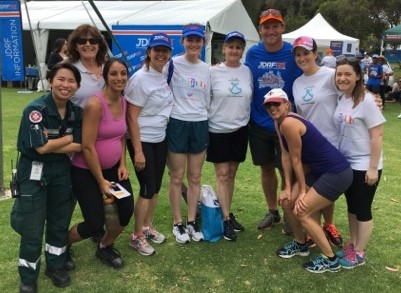Search
Showing results for "1"
Research
Symptomatic viral infection is associated with impaired response to treatment in children with acute asthmaThe objective of this study was to examine the influence of viral respiratory infection (VRI) on treatment response in acute asthma in children.
Research
Emerging issues in the Pacific BasinThis review provides a snapshot of some key environmental health issues that will provide ongoing challenges for the Pacific Basin region in the coming decades
Research
Hypoglycemia alarm enhancement using data fusionThe acceptance of closed-loop blood glucose (BG) control using continuous glucose monitoring systems (CGMS) is likely to improve.

News & Events
The Kids Research Institute Australia welcomes world-leading new laws for vapesThe Kids Research Institute Australia welcomes the Federal Government's stringent vaping reforms that took effect on 1 July 2024.

News & Events
Walkers unite for diabetesA record Perth crowd turned out for JDRF’s One Walk to raise much-needed funds for Type 1 Diabetes (T1D) research last month.
Venue Information Accommodation Options Contact us THE UNIVERSITY CLUB OF WESTERN AUSTRALIA Hackett Entrance #1, Hackett Drive, Crawley, Western
Research
Meta-analysis of epigenome-wide association studies in neonates reveals widespread differential DNA methylation associated with birthweightWe find that DNA methylation in neonatal blood is associated with birthweight, with a difference in birthweight ranging from -183 to 178 grams per 10% increase in methylation
Research
The role of preschool quality in promoting child development: evidence from rural IndonesiaThis article examines the relationship between preschool quality and children’s early development in a sample of over 7900 children enrolled in 578 preschools in rural Indonesia.
Research
A platform for discovery of functional cell-penetrating peptides for efficient multi-cargo intracellular deliveryThis report thus establishes a discovery platform for identifying novel, functional CPPs to expand the delivery landscape of druggable intracellular targets for biological therapeutics
Research
No dose-dependent increase in fracture risk after long-term exposure to high doses of retinol or beta-caroteneThis intervention study found no increase in fracture risk among 2,322 adults who took a controlled, high-dose retinol supplement (25,000 IU retinyl...
